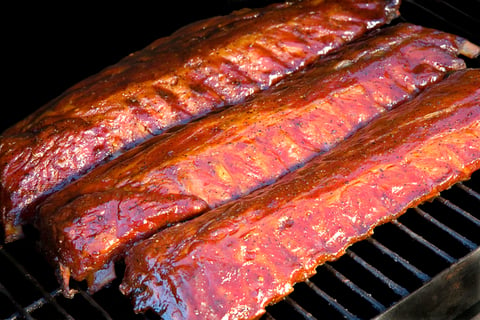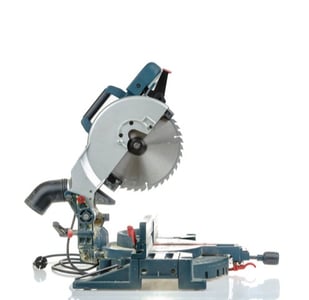Product makers who want to take their design to another level have more motion control options than ever.
Your manufacturer can now apply hinge solutions in a variety of innovative ways, making your product easier to use and safer at the same time. The right hinge design can, among other things:
- Gently open or close doors
- Hold lids open at a precise angle
- Move heavy panels into position
- Securely lock a panel in place
The benefits of a well-engineered, cost-effective hinge solution are a more ergonomic user experience, decreased operating effort and extended product life due to lower wear and tear.
Lofty goals, right? But very achievable with smart design. Here are five ways to do it:
5 Must-See Motion Control Hinge Solutions
When deciding on a motion control hinge design, your industry type and your end goal are obviously a priority. Luckily, there’s something in motion control for just about anybody. There are more options than you may realize:
- Counterbalancing
- Soft open
- Soft close
- Detent
- Lock
Here’s a little more about each:
1. Counterbalancing Hinge
The standard counterbalancing, or free stop, hinge takes advantage of the entire range of motion of the hinge, with no mid-motion operations. These hinges use heavy-duty counterbalance springs that store and release energy in a way that reduces user effort to move the door, panel or screen to a fully open position.
2. Soft Open Hinge

This type of hinge solution eliminates the need for a handle to open a lid, or allows a handle to pop out for easy access when the user undoes a latch.
Soft opening uses overbalancing to achieve its function. Basically, you’re providing more spring torque than what is required to achieve a balance.
A simple, everyday example would be a garbage can lid you can open with your foot. A more advanced example is an open grill lid that will not fly toward the user due to a wind gust or someone bumping into it. The soft open hinge solution also makes sense in a workplace environment where you don’t want handles intruding into a workspace and causing safety issues.
3. Soft Close Hinge
The soft close, or coast close, hinge is becoming more popular in:
- Kitchen drawers
- Household appliances
- Outdoor cooking units
- Medical equipment
- Products that need a gentle but firm close
Underbalance is the key here. Because there is not enough spring torque to balance, the lid simply wants to close.
Here the hinge closes from a low angle, anywhere from 30° to 5°.
One application for soft down lid support is a smoker, where you want enough force down to ensure a good seal so the smoke cannot escape. Another possible use outside of grilling is an electronic sensor or lock that needs to be satisfied when a machine is closed. This would apply to medical devices and other devices holding sensitive materials.
Another use for a no-slam hinge is medical devices, so dangerous chemicals or contaminated materials don’t splatter when the lid is closed.
Have questions about motion control or counterbalancing technology? Check out the free resource below:
4. Detent Hinge
 A detent hinge includes a mechanism that allows the door or cover to be opened and held in predetermined locations in separate motions.
A detent hinge includes a mechanism that allows the door or cover to be opened and held in predetermined locations in separate motions.
These hinge solutions can be useful for lightweight cabinet doors or other devices that need to be opened consistently and locked in position out of the user’s way. An example would be a catch in a machine that prevents motion until released, such as a miter saw that clicks into position at 45°, and then requires an additional push to move it to 90°.
5. Lock Hinge
Typically a locking hinge combines a spring hinge or counterbalances with a locking mechanism to create the desired motion and stopping.
One common lock hinge example is an engine compartment on a ship. The door’s hinge should lock into place when in the open position to prevent it from falling on a crew member.
Another example of a lock hinge is a job site tool box -- the kind that are so big, a crane has to drop them down into the site. A job site like that often isn’t level, so you have to worry about wind and other factors when positioning the box. A secure lock hinge keeps the lid from closing and possibly injuring workers.
More Examples of Winning Hinge Design
Industries that benefit from the latest motion control hinge solutions include.
- Kitchen appliances, such as food prep tables and oven doors
- Medical equipment, such as blood draw stations, centrifuges, and medical slide preparation devices
- Office, residential, and hospitality furniture, including flip-up countertops, ergonomic keyboard arms and airplane trays
- Industrial applications, such as construction accessories, machine guards, and vacuum chamber doors
If you have complicated design problems (i.e. safety issues) that need advanced hinge solutions, it may be time to consider doing something differently with your lift support. Look for a hinge manufacturer with the ability to adapt your design to a safer, easier experience for the customer.
(Editors Note: This blog was originally published in July 2019 and was updated in March 2022 to reflect current and updated information)
.png?width=12000&height=2033&name=WeberKnappLogo_white%20(1).png)



